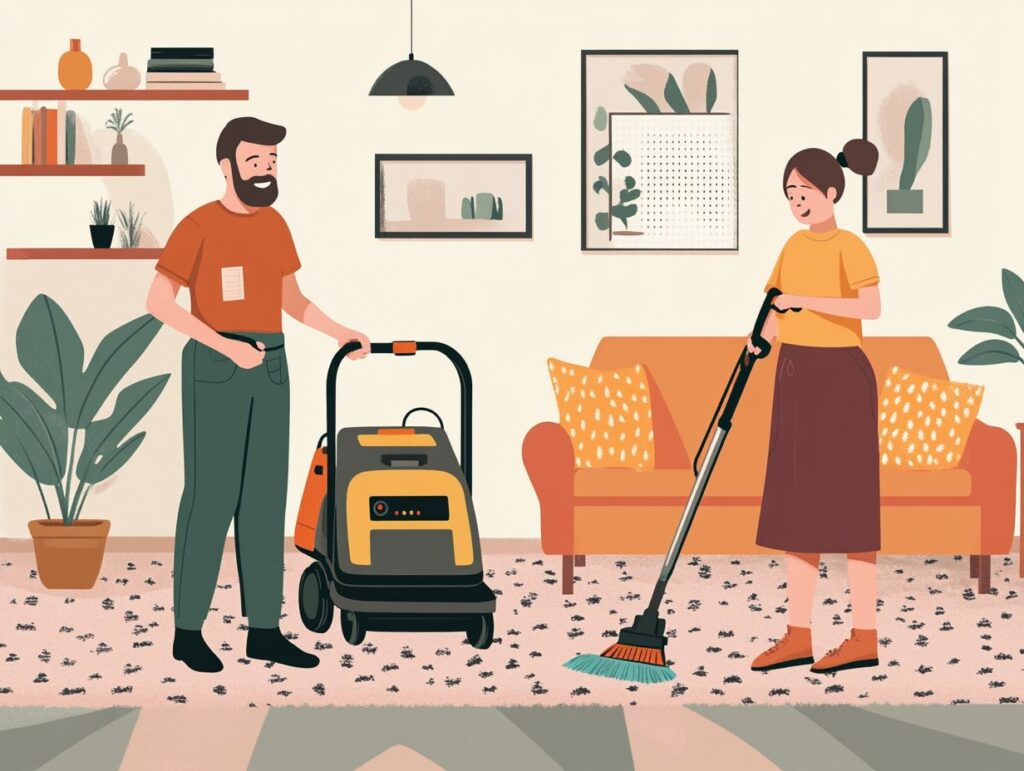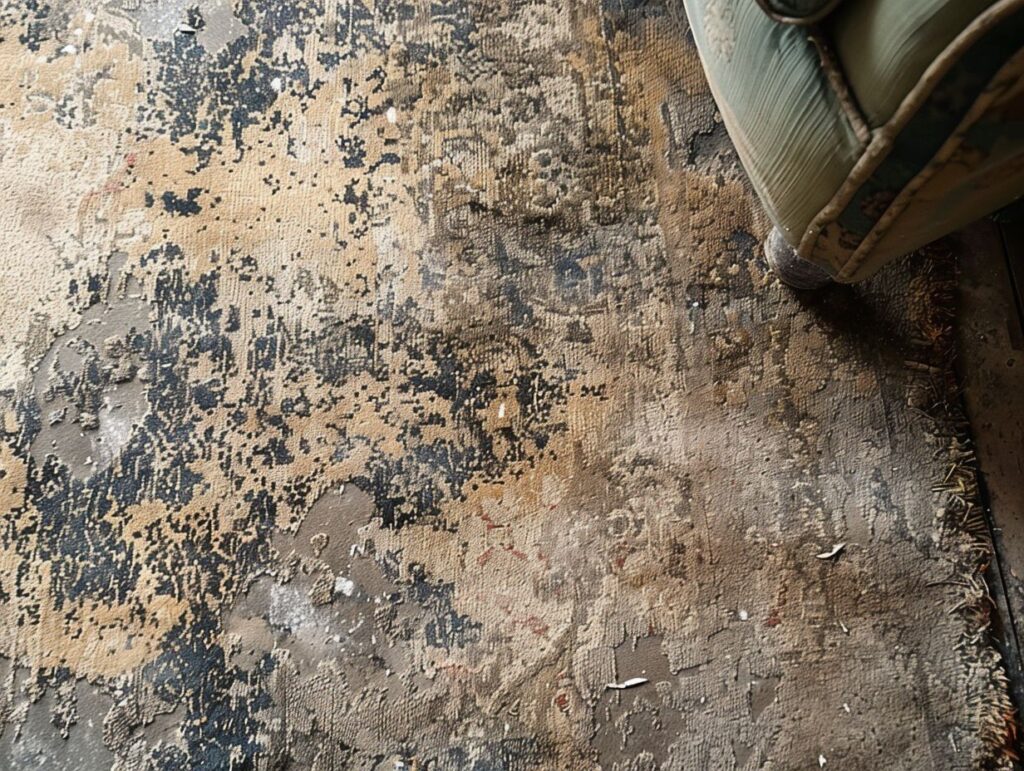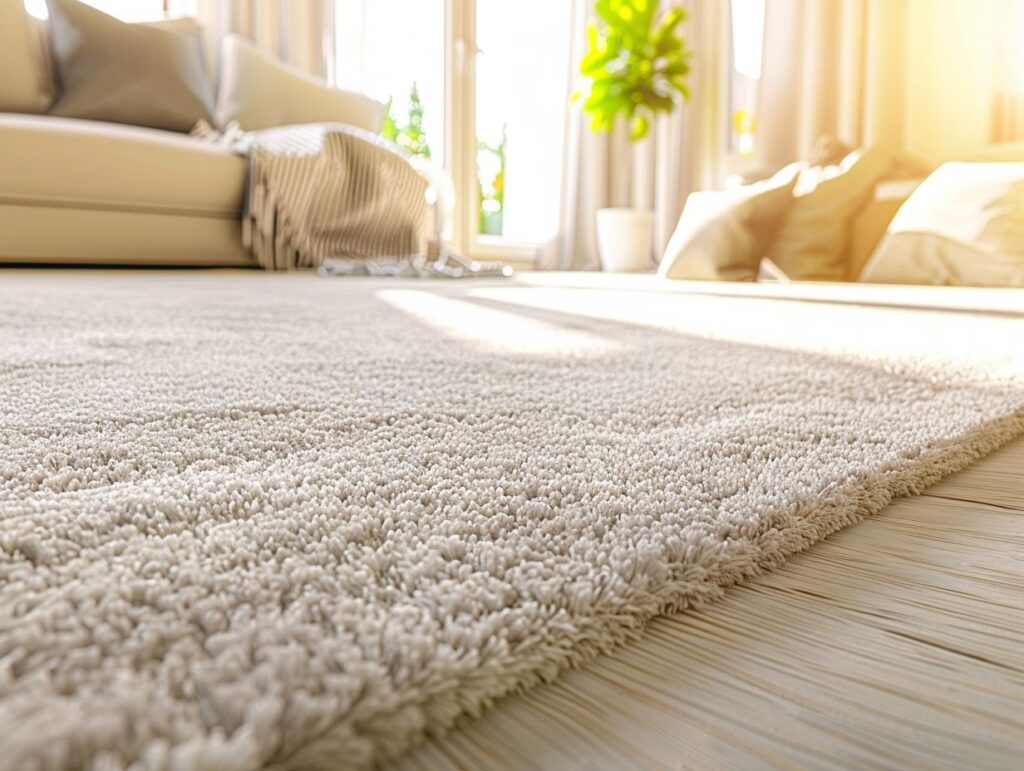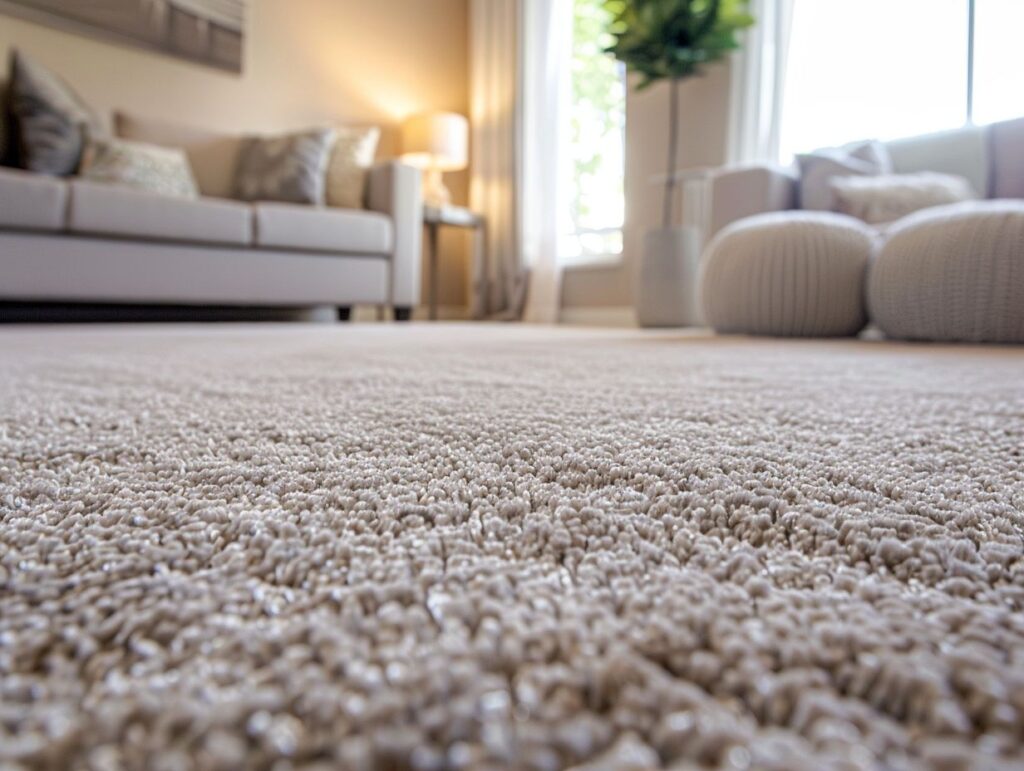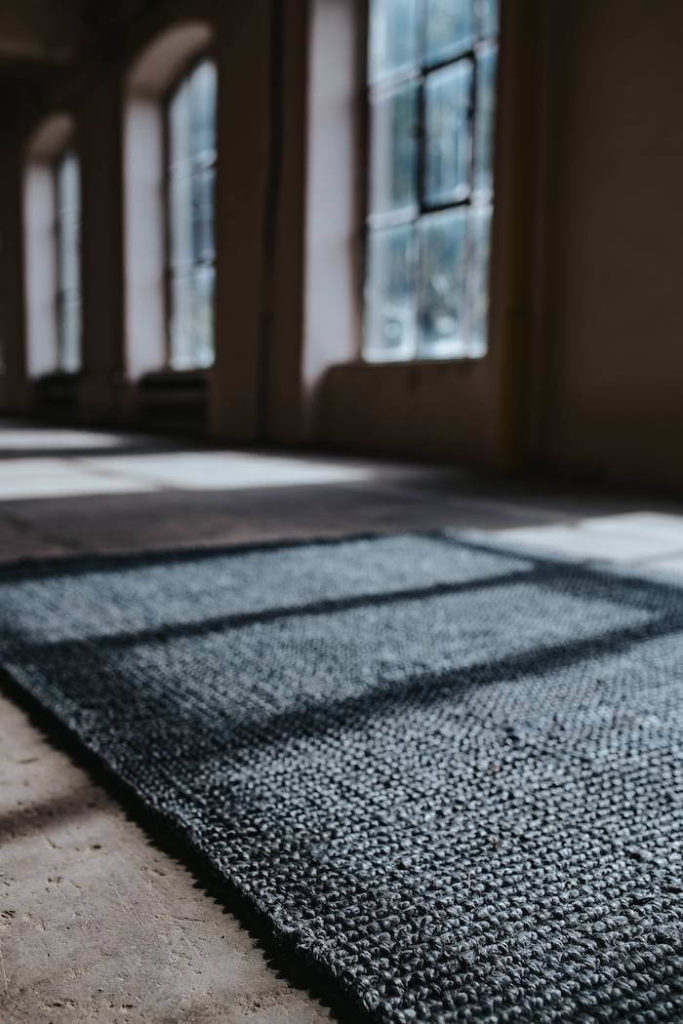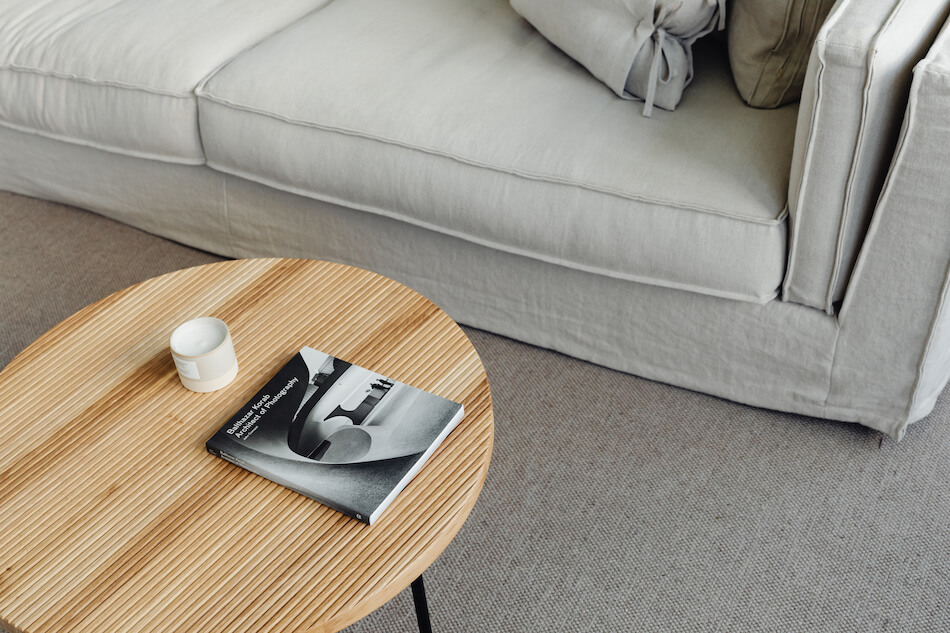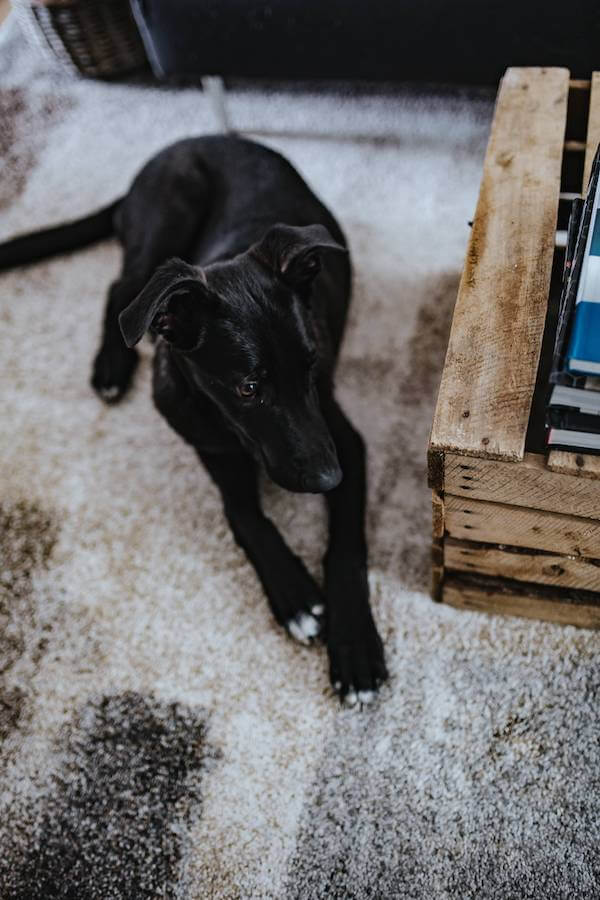I’ve lost count of the times I’ve stepped through a client’s front door and spotted the look of despair before they even point at the carpet. My favourite phrase tends to appear within the first minute: “I swear it wasn’t this bad yesterday.” I hear it from London homeowners, tenants trying to protect their deposits, and landlords convinced the place needs a full refit. I’ve learnt to reassure people straight away. Some of the scariest-looking carpet problems take minutes to sort out. They look dramatic, but they rarely mean lasting trouble.
This piece takes you through five issues that spark the most panic. Each one seems like a disaster at first glance. Each one tends to fall into the “quick fix” category from a professional point of view. I cover what causes them and how to handle them before you call someone like me. If you feel a little calmer by the end, then I’ve done my job.
The Classic Furniture Dent That Looks Like Permanent Damage
How Compression Works And Why It’s Usually Nothing To Worry About
I still remember one visit in Islington. The client had shifted a huge corner sofa to clean underneath it. The dents left behind looked deep enough to hide a lost phone charger. She stood there shaking her head, convinced she’d have to replace the whole room’s carpet. I crouched down, pressed the fibres with my thumb, and told her she’d be fine.
Compression marks form when heavy furniture sits in the same spot for ages. The fibres lie flat and hold that shape long after the weight moves. It looks dramatic because the dents stand out next to the raised pile around them. The good news is that carpet fibres often behave like hair after a tight ponytail. Give them a little care and they bounce back.
One easy trick involves ice cubes. You place one in each dent, let it melt slowly, and use a soft brush to tease the fibres upright. Another method uses a warm damp cloth laid over the dent and a gentle pass with the tip of an iron. You never press the iron onto the carpet itself. You only use the heat to relax the fibres. A fingertip brush at the end helps them stand tall again. If you’d rather avoid heat, a spritz of clean water and a quick fluff with a fork often works. The point is simple: dents look dramatic, but they tend to be all show and no real damage.
That Dark Patch Near The Door That Looks Like A Deep Stain
How Traffic Marks Collect Films Rather Than True Stains
Hallways cause an unbelievable amount of stress. I get called out to deal with dark streaks near front doors, kitchen thresholds, or the base of stairs. Most people think the patches come from deep staining or dye loss. You’d expect that, especially when the marks keep returning. The truth usually sits on the surface.
Those dark tracks build up when oily films from footwear settle on the top of the fibres. They cling to the surface and catch dust. Each step presses the film deeper into the pile and spreads it across the carpet. It starts faint and becomes a murky path over time. I met a landlord in Shoreditch who thought he’d need to re-lay the whole hallway before an inspection. He paced around pointing at the floor as though he feared a courtroom verdict. I knelt down, rubbed a little dry compound into the mark, brushed it through, and vacuumed. The patch lifted enough for him to breathe again.
A light clean usually sorts these marks out. You can use a dry compound, a microfibre cloth with a dash of mild solution, or a neutral carpet spot cleaner. Small circular movements work best. Strong scrubbing only spreads the film. If the mark fades but does not vanish, a professional hot water extraction session finishes the job. The key thing to remember is that a dark patch near a doorway almost never means permanent trouble. It tends to mean the carpet needs a rinse rather than a rescue mission.
The Patch That Looks Bleached But Usually Isn’t
How Light Reflection Tricks The Eye
Few things spook homeowners like a pale patch in the middle of an otherwise tidy carpet. The panic sets in almost instantly. People picture bleach spills, sun fading, or dye loss. I once visited a woman in Richmond who explained that her niece had been “behaving suspiciously” around a cleaning spray. She feared the worst. I took one look at the patch, stroked the pile in the opposite direction, and the colour came back.
A lot of pale areas come from pile distortion rather than bleach. Fibres lie at odd angles, and the light catches them in different ways. The result looks like fading even when the original colour sits untouched beneath. Residue from old cleaning attempts can create a similar effect. Sticky detergent dries on the tips of the fibres and reflects the light, giving the impression of a washed-out patch.
A quick test solves the mystery. Run your fingers backwards and forwards across the area. If the colour shifts depending on the direction, it’s pile distortion. You can reset the fibres with a gentle brush or a light mist of clean water. If it feels a bit tacky, then residue might be the culprit. A warm damp cloth and tiny circular wipes help break it down. Once the fibres stand upright again, the patch usually matches the rest of the room.
Bleach marks do happen. Those tend to look sharp-edged and permanent no matter how you move the pile. In that case, patch repair or colour restoration becomes the next step. Most cases I see across London turn out to be simple distortions. They look much worse than they are.
The Rough, Crispy Patch That Seems Worn Out
Why Residue Build-up Creates False Wear
A rough, crispy patch sends people into full panic mode because it looks like the carpet has worn down. One landlord in Clapham asked me to confirm how many years he’d lost from his bedroom carpet due to a previous tenant. He pointed at a stiff patch next to the bed. The fibres felt sharp to the touch. He worried that someone had spilt something strong and damaged them forever.
This usually comes from residue build-up. Cheap carpet shampoo, dish soap, and DIY cleaning sprays leave sticky films on the fibres. Dust clings to the residue, hardens, and creates that scratchy texture. The carpet then behaves as if it has weathered years of foot traffic, even though the fibres themselves remain fine underneath the build-up.
You can deal with this kind of patch at home. A microfibre cloth with warm water works wonders. Gently buff the area to loosen the residue. Dry it with a towel and brush the fibres up afterwards. If the patch feels stubborn, a proper rinse with a wet-dry vacuum solves it. I’ve brought countless “ruined” carpets back to life this way. People often look relieved, as though they’ve just been handed back a deposit cheque on the spot.
The best prevention involves using the right cleaning products. Mild neutral solutions avoid sticky films. A proper rinse cycle helps even more. If you ever suspect a patch might be due to residue build-up, treat it early. The sooner you break it down, the easier it lifts.
The Strange Smell That Suggests Hidden Damage
Why Odours Often Come From Surface Sources, Not The Carpet Itself
A sudden smell in a room sets off every alarm bell in a homeowner’s head. I’ve seen it so many times. Someone calls me in with the haunted look of a person who’s convinced they’ve uncovered mould, leaks, or pet damage buried deep under the carpet. The truth often sits right at the surface.
Carpet fibres act like little sponges. They catch cooking smells, smoke, sweat from trainers, and even perfume. When these scents mix, they create odd odours that don’t match anything obvious in the home. I once met a couple in Camden who thought the underlay had gone mouldy. The smell turned out to be a mix of gym shoes and a spilt protein shake that had dried in the pile.
You can deal with most surface odours without lifting a single carpet edge. A light mist of cool water and a neutral carpet deodoriser works well. Let the room breathe afterwards. Open windows in two directions if possible, so the air moves through the space instead of drifting out slowly. If you have pets, a light rinse of the affected zone helps refresh the fibres. Always test a small patch before you apply anything new.
A smell that grows stronger over time or refuses to shift may point to a deeper issue. Leaks, heavy pet accidents, and deep spills can soak through the underlay. When that happens, the carpet usually needs a professional treatment. Still, the majority of cases I come across start and end at the surface. They look frightening, but they rarely signal long-term trouble.
Final Thoughts
Carpets have a dramatic way of making small issues look like disasters. I see it every week across London. Once you understand what sits beneath the appearance, the panic fades. Dents rise. Dark marks lift. Patches that look faded turn out to be reflections. Rough areas soften. Strange smells drift away.
A lot of carpet care comes down to spotting which problems deserve a closer look and which ones only need a quick touch-up. If anything on your floor has you worried, take a breath and try the simple steps in this guide. You may save yourself time, stress, and a good chunk of money.
